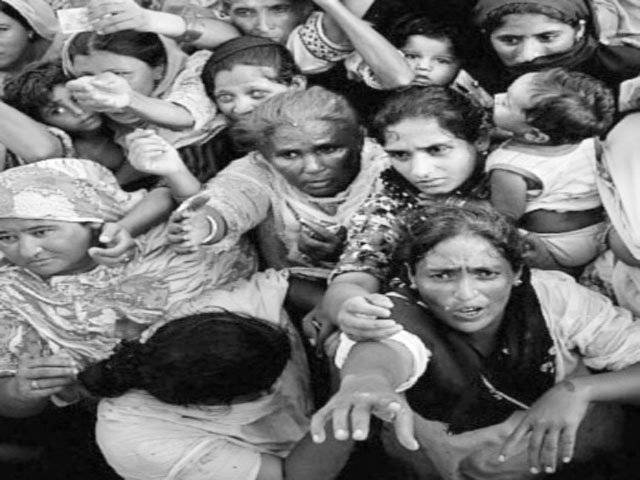The worst floodwaters in Pakistans history began their devastating journey last summer, carving a path of destruction that affected more than 18 million people and left one-fifth of the country submerged. The good news is that the humanitarian crisis has ended. Pakistans communities are rebuilding, but this part of the story is taking place in the absence of cameras, as the floodwaters and international support for recovery have receded. This underfunded post-disaster phase must have the worlds attention if survivors are to get back on their feet. Last year alone, earthquakes, floods, cyclones, volcanic eruptions and droughts affected more than 200 million people worldwide and caused 300,000 deaths. Economic losses are estimated at $110?billion, according to the Brussels-based Centre for Research on the Epidemiology of Disasters. While the frequency of disasters is on the rise worldwide, the international community knows what actions can be carried out in advance to reduce their impact. After Pakistans flooding, the response to the United Nations appeal for close to $2?billion in relief and early recovery funds was strong. But $413?million is still needed for urgent efforts to rebuild agriculture and food security, health and nutrition, housing, and public services such as roads, waterways and sewage systems. Without question, much has been accomplished in the past year. National and international relief agencies and journalists flocked to flood-damaged sites across the Indus Valley. I saw firsthand how lives were turned upside down when I visited Khyber Pakhtunkhwa province in the northwest and Sindh province in the southeast. Since August, national and international agencies across the flood zone have restored water and sanitation services to 1.6?million households, provided 64,000 shelters, helped more than 15,000 people reclaim lost identity documentation and restored more than 3,600 pieces of community infrastructure, including buildings, bridges and roads. Some 700,000 of those in need have received educational support. More than 350,000 malnourished children were treated at feeding centers, and 14?million patients have received essential medicines. More than 300,000 found dignity and self-sufficiency in rebuilding public systems and services through cash for work projects. But for the majority of those whose lives were swept away, there is still a long way to go. In a country where farming provides the basic livelihood for 80 percent of the countrys 187?million people, 430,000 farming households in 14 severely flood-affected districts will need agricultural support over the next two years. Tens of thousands still need regular food supplies and housing. And July marked the onset of a new monsoon season. Preparation for heavy rainfall and greater resilience in post-disaster rebuilding can mean the difference between life and death. Measures to reduce risk from natural disasters at national, regional and local levels such as the contingency planning and scenario mapping completed last month by Pakistans National Disaster Management Authority can avoid repeated costs, especially when events are cyclical or seasonal. Wise investments in early-warning systems can help vulnerable communities by offering precious time to get out of harms way. Simple technologies such as arched foundations, pyramid-shaped roofing and wire-reinforced cement can make houses disaster-proof and reinforce public buildings against floods or earthquakes. When communities are prepared, theyve been able to rise up after a disaster. Khyber Pakhtunkhwa residents, for example, activated a community-based disaster management system after the floods hit last summer and got a head start in their recovery, planting crops in newly drained highly fertile areas for this years spring harvest. This increased stable food supplies in the province. Efforts to regroup, rebuild and replant continue on the road to long-term reconstruction and rehabilitation. Building Pakistans resilience will require urgent and ongoing support and commitment from the international community. The writer is assistant secretary general of the United Nations, assistant administrator of the United Nations Development Program and UNDP regional director for Asia and the Pacific. The Washington Post
Friday, April 19, 2024
Flood victims still need support

SC suspends ECP’s re-polling order in PP-51
April 19, 2024
Court approves plea bargain of Parvez Elahi’s co-accused
April 19, 2024
Zardari creates another parliamentary record
April 19, 2024
KP politicians, civil society laud President’s address
April 19, 2024
A Tense Neighbourhood
April 19, 2024
Dubai Underwater
April 19, 2024
X Debate Continues
April 19, 2024
Hepatitis Challenge
April 18, 2024
IMF Predictions
April 18, 2024
Kite tragedy
April 19, 2024
Discipline dilemma
April 19, 2024
Urgent plea
April 19, 2024
Justice denied
April 18, 2024
AI dilemmas unveiled
April 18, 2024
ePaper - Nawaiwaqt
Advertisement
Nawaiwaqt Group | Copyright © 2024





